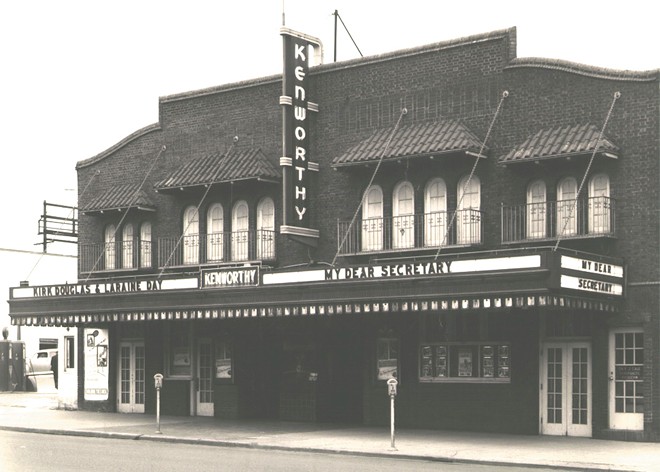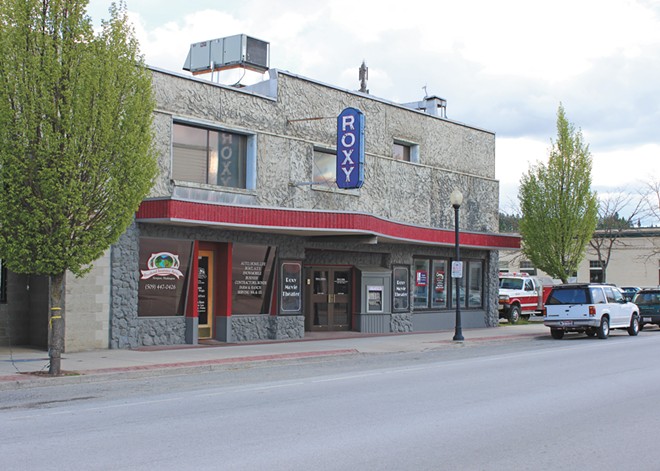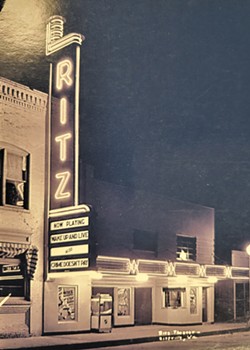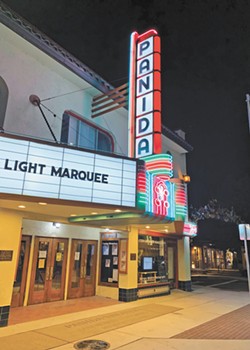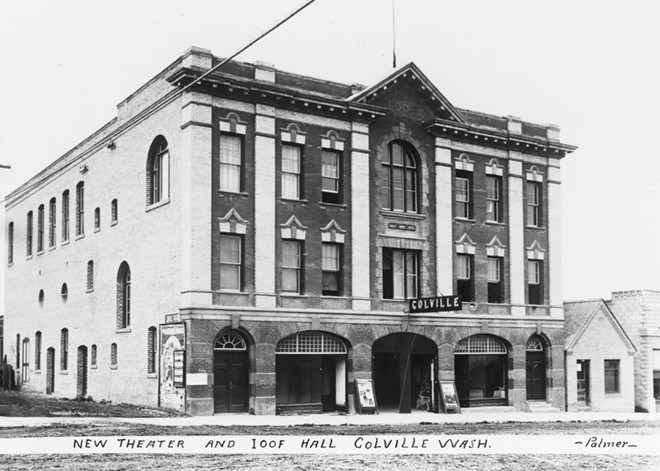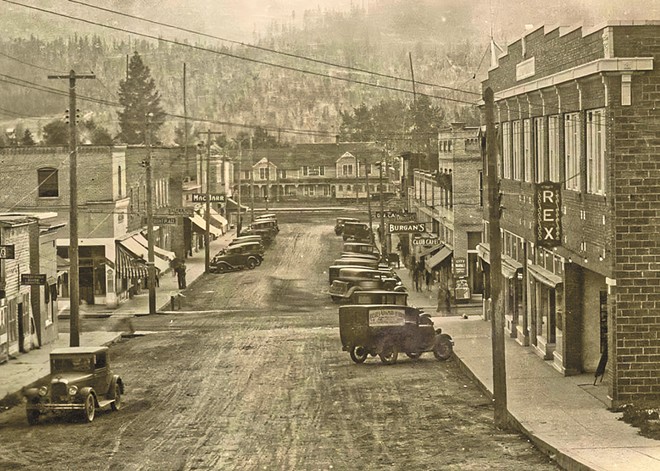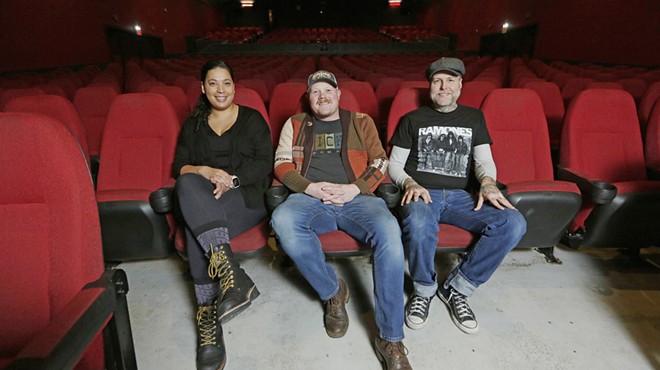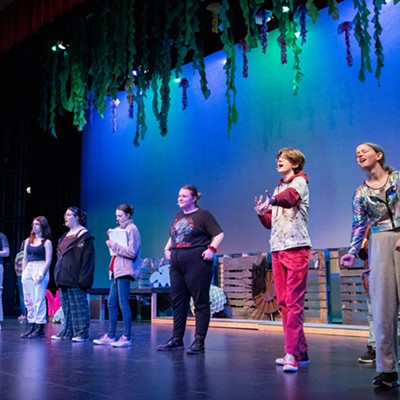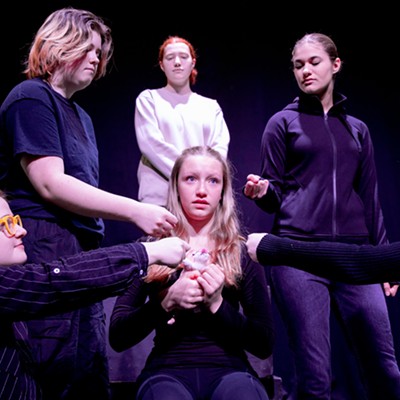Before VHS tapes, DVDs and streaming, there was only one way to watch a movie: inside a cavernous theater auditorium in front of a big, white screen, surrounded by friends, family, neighbors and strangers. It's why not only urban neighborhoods but nearly every small town across the Inland Northwest once had its own movie theater.
That was long ago. The rare survivors still operate as cinemas today, like Moscow's Kenworthy, Ritzville's Ritz and, yes, Spokane's Garland Theater, which has new owners with big plans.
Today, these theaters play many roles, as a small town's only place to see first-run releases or operating as multifaceted venues offering less-mainstream fare and even non-cinema events. But many threads unite them: owners' passion for preserving local history, a nostalgic longing for the magic of seeing a beloved film for the first time, and a desire to bring communities together over a shared love of movies and art.
— CHEY SCOTT
KENWORTHY PERFORMING ARTS CENTRE
508 S. Main St. • Moscow • kenworthy.org
While the story of many single-screen theaters is one of a constant struggle in a niche market, things are far less dire at Moscow's Kenworthy Performing Arts Centre. Nearly 100 years after opening as a movie theater, the nonprofit space has carved out a beloved niche in the North Idaho cultural scene.
Originally opening as an opera house called the Crystal Theater in 1908, the spot was bought by Milburn Kenworthy in 1925 and operated as a silent movie house from 1926 to 1928, before converting to screen talkies. The Kenworthy family remained in charge until 1999, when Judd Kenworthy gifted the theater to Moscow Community Theatre, Inc.
Now, as a nonprofit, the Kenworthy can be more creative with its cinematic programming. While the theater still screens some first-run films (including the types of indie gems that rarely make cineplexes), blockbusters aren't their primary trade. Repertory films populate much of the theater's calendar, including series like Sound on Screen, Family Flicks, Absolute Anime, choice selections from Moscow Film Society, MET Opera screenings, an array of nature films and more. The moviegoing experience is bolstered by the 2019 addition of new chairs and carpeting (matching the building's art deco style) and a liquor license that allows the theater to sell beer and wine.
But KPAC's offerings don't stop at projected images.
"I like people to think of the Kenworthy as more than just a movie theater, but as a full, mixed-media live performance venue where you can do pretty much anything that you can conceive of," says Colin Mannex, the Kenworthy's executive director. "We want people to be thinking of the Kenworthy as their one-stop place for all of their entertainment and live arts related types of events downtown."
The Kenworthy also hosts a ton of live music, theater and comedy. There's also a new backstage venue with a capacity of 80 for smaller scale events. The theater's also trying to add more "liveness" to the movies, having local musicians play along with films like Repo Man and Reefer Madness.
This year's Silent Movie Festival in September will feature a full slate of films with scores commissioned by regional composers. In the future, Mannex hopes they'll be able to team up with other regional theaters like the Garland and Panida to tour some of these productions.
Looking forward, a $100,000 grant from Idaho Heritage Trust will go toward restoring broken neon tubes in its marquee. Fitting, as the Kenworthy is already a glowing cultural beacon in the Inland Northwest. (SETH SOMMERFELD)
THE NEWPORT ROXY
120 S. Washington Ave. • Newport • thenewportroxy.com
The Newport Roxy only exists because the right straw was drawn. Literally.
Regional theater impresario Charles Bishop built the structure in 1951, but populations were too small to support his theaters in nearby Priest River and Newport. So straws were drawn. Newport won out, and the theater's classic neon marquee is actually spoils of that victory — it was originally displayed at the Priest River Roxy.
After a failed expansion to a three-screen complex by a different ownership group in the 2010s, Jason and Brittany Totland bought the Roxy in 2017. Most weeks the Roxy showcases a single movie, screening it three times: 7:30 pm on Friday and Saturday, plus 2:30 pm on Sunday. Since the Roxy features a stage, the space hosts other happenings like comedy shows, concerts, movie marathons and event rentals. The theater also gets a boost from the Friends of the Roxy subscriptions for cinema-loving supporters.
The space certainly has its quirks — black light posters on the walls, for example — but the Totlands are looking to get back to a time before the 2010 remodeling. They want to tear down one of the walls in order to restore the Roxy's Grand Theater space to its full 430-seat capacity (it's currently 200). Since they don't want to start a crowdfunding campaign to meet the financial needs to do this, the family applied for a Washington Historic Theater Grant and is hoping that will get approved.
That said, the Totlands aren't against other redesign innovations. According to Jason, there are plans to have the front half of the theater remain as auditorium seating while the back half could be transformed into dinner seating, with the idea of opening a restaurant and commercial kitchen as part of the Roxy. Considering the theater's history, one can only imagine that all drinks will be served with straws. (SETH SOMMERFELD)
BING CROSBY THEATER
901 W. Sprague Ave. • Spokane • bingcrosbytheater.com
The Bing Crosby Theater wasn't always "The Bing."
Opened in 1915 and originally named the Clemmer Theatre, the three-story building on the corner of Lincoln Street and Sprague Avenue in downtown Spokane was built by Edwin W. Houghton and came to be thanks to August Paulsen and Howard Clemmer.
Like many of the region's early wealthy folk, Paulsen made his money mining silver in Idaho and invested his wealth into Spokane buildings. When Paulsen asked Clemmer, whose father was already in the theater business, to run a theater in one of Paulsen's buildings, a partnership was formed.
The 800-seat theater was first used to show silent films and had luxurious murals as well as a grand Kimball organ. In 1925, the theater sold to Carl Laemmle, a co-owner of Universal Studios. Under new management, it hired performers to put on acts between movies. Four years later, the Clemmer sold to a new owner who renamed it the Audian. The building changed hands again in 1931 and became the State Theater, showing movies until closing in 1985. When the venue reopened in 1988 after extensive refurbishment and renovations, it was called the Met.
Finally, after decades of back and forth, the theater was purchased in 2004 by local businessman Mitch Silver and was renamed the Bing Crosby Theater after the beloved crooner and multimedia renaissance man. Crosby performed there several times before eventually departing his hometown in search of stardom. (Spoiler alert: It worked out!)
The theater is now owned by Spokane developer Jerry Dicker, and hosts a variety of live performances ranging from touring cover bands to local dance productions, and still screens films from time to time. Its marquee is a beacon for theater and arts lovers while reminding visitors of the city's vibrant past, present and future as a purveyor of the arts. (MADISON PEARSON)
RITZ THEATER
107 E. Main St. • Ritzville • facebook.com/RitzvilleRitz
A tall neon sign illuminates the pale yellow exterior of the Ritz Theater, which opened in the rural farming town in 1937.
The Ritz was designed by Seattle architect Bjarne Moe, who specialized in movie theaters and was commissioned to work on numerous such buildings around the Pacific Northwest. The theater was first owned and operated by Roy and Daisy Irvine, who lived in a second-floor apartment that's currently home to the Ritzville Downtown Development Association, also the theater's current owners.
The Irvines played movies almost every day until Roy's death in 1952, after which the Ritz was run by various operators and occasionally closed for lack of one. Then, in 1983, local farmer Herb Benzel bought the Ritz after Daisy Irvine's death. Benzel and his farm crew spent three winters repairing the theater. It saw multiple operators during his ownership as well, including Dora Kramer and her family for around 20 years.
In 2012, the Ritz was donated to the Ritzville Downtown Development Association. The Kramers stopped showing movies in July 2013 due to the cost of switching to digital projection.
Later that year, however, the downtown association began restoration work, adding in a 16-by-16-foot stage. Capacity was reduced to 256 seats, compared to 422 when the Ritz first opened.
Today, the Ritz shows first-run movies on weekends, plus occasional live music performances.
"With all the businesses that we lost during COVID downtown, if you told me 10 years ago that the Ritz Theater would be the only business open on Main Street on a Friday and Saturday night, I would've told you you were crazy," says John Rankin, the Ritz's current manager. "But that's the truth." (SUMMER SANDSTROM)
PANIDA THEATER
300 N. First Ave. • Sandpoint, panida.org
In 1969, Douglas Jones was in seventh grade when he began working at the Panida Theater in Sandpoint, Idaho. More than 50 years later, Jones couldn't be happier to still be working there.
The Panida (a portmanteau combining PANhandle and IDAho) opened in November 1927 primarily as a vaudeville theater.
"The theater was built in anticipation of sound so, of course, they showed plenty of movies," Jones says. "But the owner, Floyd Gray, was a vaudevillian performer. He ran a show called Farmer Gray's Emporium and kept that going for many years."
In the early 1950s, the theater added a stunning art deco marquee facing Sandpoint's First Avenue. But in 1978, it went dark, due in part to Gray's death in 1972 and to the rising cost of running a movie theater.
"The building was then leased to a group of entrepreneurs who abused the building," Jones says. "Thanks to a huge community effort, however, the theater opened once again in 1983 after a ton of restorative work."
The Panida was purchased by the community via an effort headed by three local women: Susan Bates-Harbuck, Laurel Wagers and Jane Evans. Their fundraising efforts brought in $75,000 in three months, enough for a down payment on the theater. Since then, the Panida has been run by a board of directors and belongs to its community. Now, the theater not only shows films but also hosts notable musical acts like Jim Messina and Graham Nash, as well as smaller, community-focused dance performances, comedy shows and theater productions.
In 1984 the theater was placed on the National Register of Historic Places as a part of the Sandpoint Historic District and has received special recognition from the governor of Idaho, the Idaho Commission of the Arts, the Idaho Centennial Commission and the U.S. Department of the Interior. Panida's board of directors is already planning the theater's centennial celebration in 2027 and hopes to expand the theater in the coming years.
"It's a place full of memories," Jones says. "It deserves all of the love and care it's received." (MADISON PEARSON)
ALPINE THEATRE
112 N. Main St. • Colville • Facebook: Alpine Theatre
Sometimes there's no need to overcomplicate things. Thus is the case with Colville's Alpine Theatre.
"We're a little theater in a little town," co-owner Steve Wisner says with a laugh.
As the only year-round movie theater in Stevens County, the single-screen theater is an outpost for film lovers in the area. (Sidenote: Colville's Auto-Vue Drive-In Theatre runs May through Labor Day, and is also owned by Wisner.) Built in 1937, Alpine's art deco facade catches the eye of most passers-by. At the time of its opening, the Alpine boasted the best sound system in the Inland Northwest outside of Spokane. The Wisner family has been operating the venue since April 1974, meaning the 50th anniversary of their operation is fast approaching.
There was an extensive remodel of the Alpine in 1994, which resulted in it losing almost 200 seats.
"Those 1937 seats... God, they were horrible," Wisner says. "Wrack 'em, pack 'em, stack 'em. That's pretty much how they were feeling at the time."
On the technical side, Wisner installed a new modular Dolby sound system about 2 1/2 years ago. All that said, there's a chance the Winsers might not hit that aforementioned half-century mark.
If you happen to be looking to get into the single-screen theater business yourself, the Alpine might be up your alley. The Alpine Theatre and Auto-Vue Drive-In Theatre were put up for sale in December for $800,000.
As Wisner declared during our chat, "If you know anybody who wants to buy it, let me know."
So if you missed out on buying the Garland but have yet to let your movie mogul dream die... (SETH SOMMERFELD)
REX THEATER
119 Main St. • Priest River • rextheater.org
One hundred and one years ago, Canadian actress and producer Nell Shipman's silent film The Grub-Stake premiered at the Rex Theater's grand opening in 1923.
Since then, the Rex has continued to honor that history, especially now as renovations are underway with the goal of providing a venue to bring art and culture to Priest River.
Briefly known as the Roxy, the theater shut down in the 1950s when a decision was made to move the area's sole movie theater to nearby Newport. The building soon fell into disrepair.
Chad Summers, president and director of the Foundation for the Rex Theater, says that while the Beardmore Block building housing the Rex underwent renovation and repairs about a decade ago, the theater remained relatively untouched.
Summers plays in a band called Bodie Canyon, and he and his bandmates decided to take on the task of repairing the Rex by creating the foundation and seeking grant funding. Their efforts thus far include removing damaged and rotted parts of the interior, laying down sloped gravel flooring and more. There's still plenty more work to be done, Summers says, but even so, many people enjoy attending events at the Rex even in its current state.
The Foundation for the Rex Theater hopes to turn the theater into a multiuse building, serving as a recording studio as well as a theater showing musical performances and movies.
"We want to go into the future, and we really want to do what the theater did 100 years ago," Summers says. "It brought culture to Priest River and that's something that a lot of locals — and people that maybe aren't from here but have been here for a while — miss." (SUMMER SANDSTROM)

